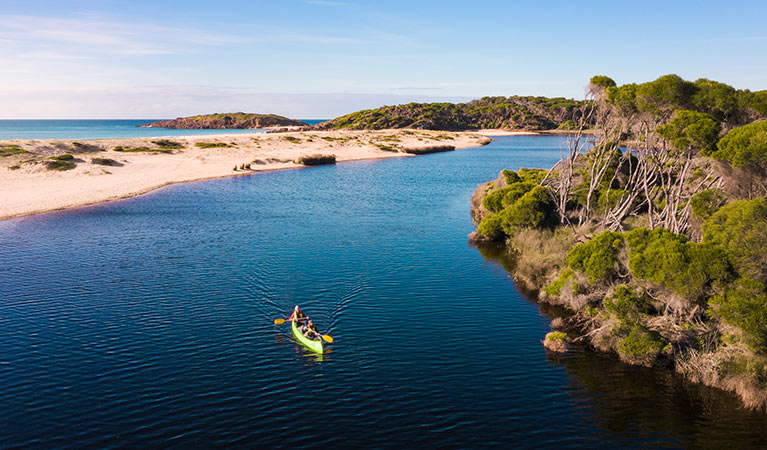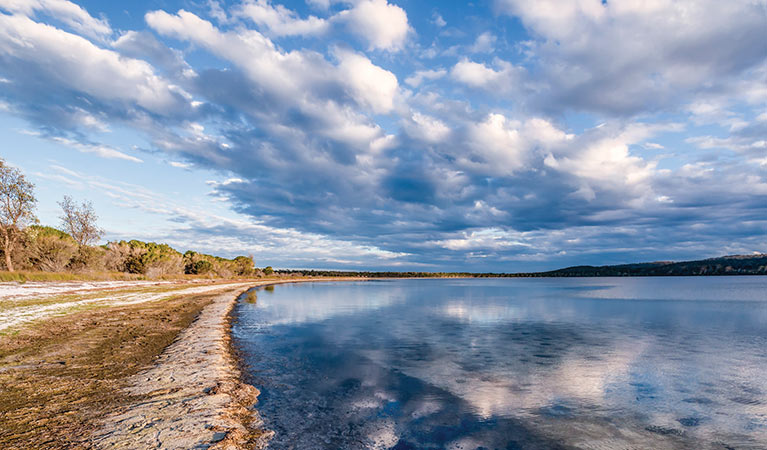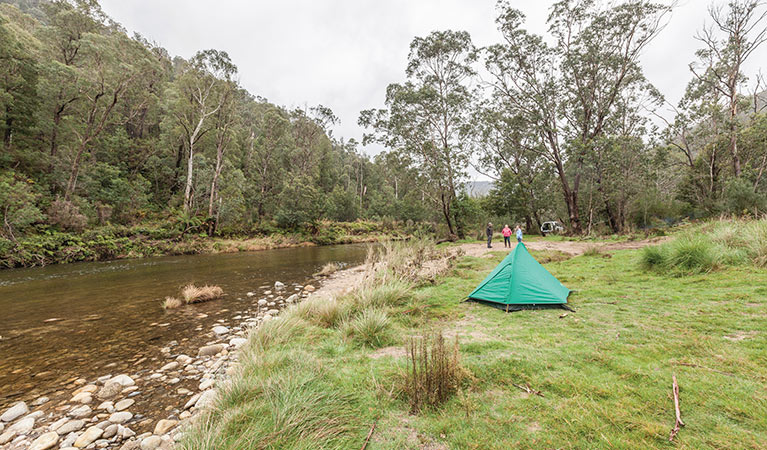River and lake safety
There are lots of fantastic places to explore in our national parks, including campgrounds that are on or near a river, lake or lagoon. The aquatic environment around rivers, lakes and lagoons can be unpredictable. Please take note of these safety tips.
Read more about River and lake safety
Plan your trip
- Check if there are any park alerts or closures before you go.
- Check the weather forecast
- Ask someone who is familiar with the area.
- If you're planning to take watercraft, see paddling and boating safety tips.
Tell somebody
Give your trip details to family and friends who are not travelling with you. Tell them when you expect to return and let them know when you have returned. For longer trips or remote areas, consider filling in a trip intention form and taking a personal locator beacon.
Check the water conditions
- Beware of fast flowing water, submerged objects and deep water.
- Watch water levels in rivers and dams as they can rise suddenly due to water releases from reservoirs and after heavy rainfall.
- During droughts, check for submerged hazards that may now be exposed and beware of poor water quality.
- Beware of steep, slippery or overhanging banks or paths especially near waterfalls.
Swim safely
- Check the water depth before going in. River and lake bed conditions can change rapidly. Never dive in head first, never jump into the water from heights. Always enter the water slowly.
- Be aware of other river uses, especially boats and watercraft.
- Never swim alone. Make sure that someone else is there to provide or get help.
- Never use a tree rope swing. Tree rope swings are dangerous and are often associated with serious injuries.
- Be aware of currents and undertows.
- If you get into trouble in the water, stay calm. Signal for help, then float on your back feet first with the current. Don’t panic.
- If someone needs help in the water, stay dry and reach out to them with a stick or throw a rope.
- Inland waters can be very cold—be aware of hypothermia even in summer.
- Never rely on pool float toys to keep you safe.
- Avoid drugs and alcohol around water.
Cross safely
- Check if the depth and current is easily passable for the entire group. If not, arrange a land or water transfer.
- In coastal estuaries, try to cross at low tide.
- Choose the best route, which is often the widest part of a straight section of the channel. As water spreads out it becomes shallower and flows slower.
- Bring a hiking pole or use a sturdy stick to provide 3 points of contact to help increase your balance.
- Cross as a group with the strongest person upstream to break the current for the others. Cross in a line holding onto each other's pack or with arms linked.
- Plan on turning back if the water is too high or too fast.
What to wear
- Sunscreen
- Sunglasses
- A wide brimmed hat
- Sun protective clothing. Remember that ultraviolet radiation (UV) levels can be high even on cloudy days.
- A lifejacket—especially for inexperienced swimmers.
- Protective footwear
- Wear the right protective gear for your activity. For example, wear fins and a leash for bodyboarding, a life jacket for kayaking, a life jacket while rock fishing. Get more advice on water safety gear
What to bring
- Insect repellent
- A beach umbrella or other sun shelter
- Fresh drinking water (2L per person). River and lake water may not be suitable for drinking.
- Food and snacks
- First aid kit
- Mobile phone. Download the Emergency Plus app
- Remember to take your rubbish with you when you leave.
Blue-green algae
In some parks, high levels of blue-green algae can occur in rivers and lakes under certain conditions. Please avoid direct contact with blue-green algae in the water and as surface scum. Warning signs may be displayed when algae levels are high. Algae can exist in the shallow muddy bays and sediment disturbance in these areas should be avoided.


